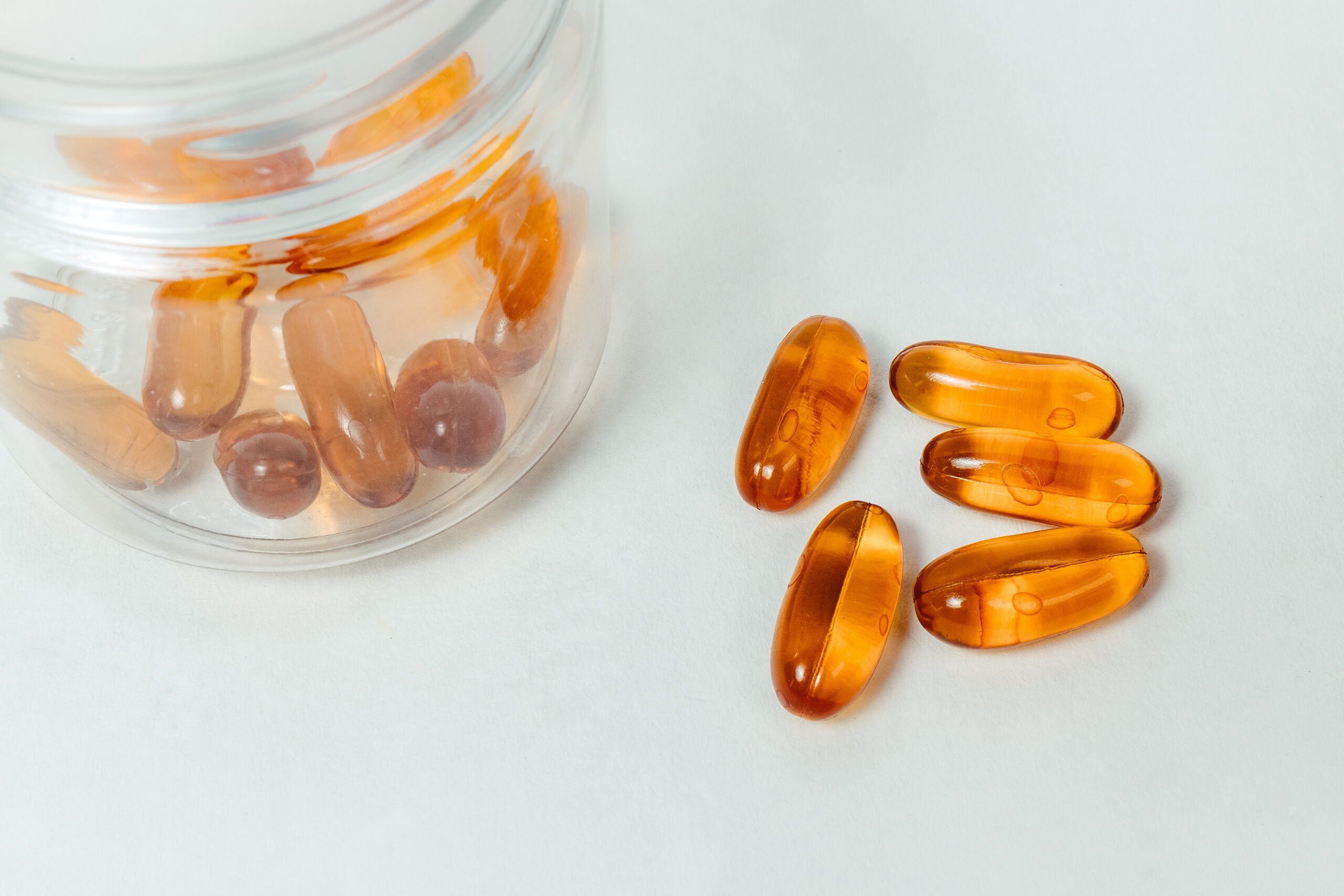So, you’ve probably heard of oxygen therapy before, right? Well, in case you’re not on the oxygen therapy bandwagon yet, let’s fill you in on what it’s all about. Oxygen therapy is a medical treatment that involves the administration of oxygen at a higher concentration than what is normally found in the air we breathe. It can be done through various methods, including nasal prongs, masks, or even special chambers. This article will take you through the ins and outs of oxygen therapy, exploring its uses, benefits, and how it can potentially improve your overall health and well-being.

Overview of Oxygen Therapy
Oxygen therapy is a medical treatment that involves supplying patients with supplemental oxygen to address respiratory conditions and improve their breathing. It is commonly used in various healthcare settings, including hospitals, clinics, and even in the home. The therapy aims to increase the amount of oxygen in the bloodstream, providing better oxygenation to vital organs and tissues. By doing so, it helps alleviate symptoms and improve the overall quality of life for patients with respiratory disorders.
Definition of Oxygen Therapy
Oxygen therapy is the administration of supplemental oxygen to individuals who cannot maintain sufficient oxygen levels in their blood. It involves the use of various delivery devices, such as nasal cannulas, masks, tents, or tracheostomy tubes, to provide the necessary oxygen. The therapy can be delivered in different forms, including static oxygen therapy, ambulatory oxygen therapy, hyperbaric oxygen therapy, and liquid oxygen therapy.
Purpose of Oxygen Therapy
The primary purpose of oxygen therapy is to ensure that an adequate supply of oxygen reaches the body’s tissues and organs. It aims to alleviate symptoms associated with low oxygen levels, such as shortness of breath, fatigue, and dizziness. Oxygen therapy can improve patients’ well-being, enhance their exercise tolerance, and promote better sleep. The therapy also plays a crucial role in managing and treating a wide range of respiratory conditions.
History of Oxygen Therapy
The use of oxygen therapy dates back centuries, with early efforts centered on understanding and harnessing the properties of this life-sustaining gas. In the late 18th century, scientists and physicians began exploring the therapeutic potential of oxygen. One notable figure in the history of oxygen therapy is Dr. John Scott Haldane, a Scottish physiologist who conducted pioneering research on oxygen and its impact on the human body. Oxygen therapy gained further prominence during the 20th century and has continued to evolve with advancements in medical technology and understanding.
Types of Oxygen Therapy
There are several different types of oxygen therapy, each designed to meet the specific needs of patients with varying respiratory conditions. These types include static oxygen therapy, ambulatory oxygen therapy, hyperbaric oxygen therapy, liquid oxygen therapy, and oxygen concentrators.
Static Oxygen Therapy
Static oxygen therapy involves providing a continuous supply of oxygen to patients in a stationary environment, such as a hospital room or home. It is typically used for patients who require a higher flow rate of oxygen and cannot move around freely due to their condition. Static oxygen therapy often utilizes oxygen concentrators or compressed oxygen cylinders to deliver the required oxygen levels.
Ambulatory Oxygen Therapy
Ambulatory oxygen therapy allows patients to move around and engage in daily activities while receiving supplemental oxygen. It usually involves the use of portable oxygen delivery systems, such as portable oxygen concentrators or lightweight oxygen cylinders. Ambulatory oxygen therapy is beneficial for individuals with respiratory conditions who need oxygen during physical exertion or when away from home.
Hyperbaric Oxygen Therapy
Hyperbaric oxygen therapy involves administering pure oxygen to patients in a pressurized chamber or tube. The increased pressure allows for higher amounts of oxygen to dissolve in the blood, enhancing oxygenation to body tissues. This type of therapy is often used for specific medical conditions, such as decompression sickness, carbon monoxide poisoning, and non-healing wounds.
Liquid Oxygen Therapy
Liquid oxygen therapy utilizes liquid oxygen, which is stored in a portable container and then converted into a breathable gas for inhalation. It is an alternative to compressed gas oxygen and offers advantages in terms of portability and longer duration of use. Liquid oxygen therapy is commonly used for ambulatory patients who require supplemental oxygen for an extended period.
Oxygen Concentrators
Oxygen concentrators are devices that extract and concentrate oxygen from the surrounding air. They provide a continuous flow of oxygen and are often used for both static and ambulatory oxygen therapy. Oxygen concentrators offer the advantage of not requiring a constant supply of oxygen cylinders or refills, making them convenient for long-term use.
Benefits and Risks of Oxygen Therapy
Oxygen therapy provides several benefits to patients with respiratory conditions, but it also comes with certain risks and side effects. It is essential for healthcare providers and patients to weigh these factors to ensure a safe and effective treatment approach.
Benefits of Oxygen Therapy
The primary benefit of oxygen therapy is the improvement in oxygenation levels, leading to better respiratory function. This helps alleviate symptoms such as shortness of breath, fatigue, and low blood oxygen levels. Oxygen therapy can enhance patients’ quality of life by allowing them to perform activities of daily living with greater ease, improving their exercise tolerance, and promoting better sleep. It can also play a crucial role in the management and treatment of various respiratory conditions.
Risks and Side Effects of Oxygen Therapy
While oxygen therapy is generally safe, it is crucial to be aware of potential risks and side effects. Oxygen supports combustion and can increase the risk of fire hazards, especially in the presence of flammable substances. Oxygen therapy may also lead to certain respiratory complications, such as oxygen toxicity or oxygen-induced hypoventilation. It is essential to closely monitor oxygen levels and ensure the prescribed flow rate is appropriate for the patient’s needs.
Precautions for Oxygen Therapy
To ensure the safe and effective administration of oxygen therapy, certain precautions need to be taken. It is crucial for patients to follow their healthcare provider’s instructions regarding the use and handling of oxygen equipment. Smoking or being in the presence of open flames should be strictly avoided while using oxygen therapy. Regular monitoring of oxygen levels and close communication with healthcare providers are vital to ensure optimal treatment outcomes.
Conditions Treated with Oxygen Therapy
Oxygen therapy is used to treat a wide range of respiratory conditions. Here are some of the common conditions for which oxygen therapy is prescribed:
Chronic Obstructive Pulmonary Disease (COPD)
COPD is a progressive lung disease characterized by chronic bronchitis and emphysema. Oxygen therapy is a cornerstone of COPD management, especially for those with severe disease. It helps relieve breathlessness, improves exercise tolerance, and reduces the risk of complications.
Pneumonia
Pneumonia is an infection that causes inflammation in the air sacs of the lungs. Oxygen therapy may be necessary for patients with severe pneumonia who experience difficulty breathing or have low blood oxygen levels.
Asthma
Asthma is a chronic condition that causes inflammation and narrowing of the airways, leading to recurrent episodes of wheezing, coughing, and shortness of breath. Oxygen therapy is sometimes administered during severe asthma attacks to support the patient’s breathing.
Cystic Fibrosis
Cystic fibrosis is a genetic disorder that affects the lungs and other organs. Oxygen therapy may be used to support respiratory function in individuals with advanced cystic fibrosis or during exacerbations of the condition.
Sleep Apnea
Sleep apnea is a sleep disorder characterized by pauses in breathing or shallow breathing during sleep. In cases where oxygen levels are significantly impacted, oxygen therapy may be prescribed along with other treatment modalities.

Prescription and Administration of Oxygen Therapy
The prescription and administration of oxygen therapy involve several key considerations to ensure appropriate and effective treatment.
Prescription Process
The first step in receiving oxygen therapy is the prescription by a healthcare provider. The prescription is based on an assessment of the patient’s respiratory condition, medical history, and oxygen saturation levels. The prescribed flow rate and duration of oxygen therapy will vary depending on the specific needs of each individual.
Equipment and Delivery Methods
Oxygen therapy can be delivered using various equipment and delivery methods, depending on the patient’s condition and lifestyle. Nasal cannulas are commonly used for low-flow oxygen therapy and provide oxygen through small prongs that fit into the nostrils. Oxygen masks cover the nose and mouth and are used for higher flow rates. Oxygen tents create an oxygen-enriched environment for patients who require high concentrations of oxygen. Tracheostomy tubes are used for individuals who cannot breathe through their nose or mouth and require a direct airway for oxygen delivery.
Monitoring Oxygen Levels
Monitoring oxygen levels is crucial to ensure the effectiveness of oxygen therapy. Patients may be required to use pulse oximetry devices, which measure oxygen saturation levels non-invasively. Regular monitoring allows healthcare providers to assess the patient’s response to therapy and make any necessary adjustments to the prescribed oxygen flow rates.
Setting Oxygen Flow Rates
Determining the appropriate oxygen flow rates is a critical aspect of administering oxygen therapy. It is essential to strike a balance between providing adequate oxygenation and avoiding the risks associated with high-flow oxygen. Healthcare providers assess the patient’s oxygen saturation levels, respiratory function, and symptoms to determine the optimal flow rate to meet their needs.
Oxygen Therapy Techniques
Different techniques and delivery methods are used to administer oxygen therapy, each with its own advantages and applications.
Continuous Oxygen Therapy
Continuous oxygen therapy delivers a constant flow of oxygen to the patient, ensuring a steady supply of supplemental oxygen. This technique is often used for individuals with chronic respiratory conditions who require a constant supply of oxygen support.
Intermittent Oxygen Therapy
Intermittent oxygen therapy involves providing oxygen supplementation for specific periods, usually during exertion or while the patient is experiencing symptoms. It allows greater flexibility and conserves oxygen resources, making it suitable for patients who do not require constant oxygen support.
Pulse Oximetry
Pulse oximetry is a non-invasive method used to monitor oxygen saturation levels. A small device, called a pulse oximeter, is placed on a finger or earlobe to measure the level of oxygen in the blood. Pulse oximetry is frequently used in conjunction with oxygen therapy to assess the effectiveness of treatment.
Supplemental Oxygen Therapy
Supplemental oxygen therapy is the term used to describe the administration of additional oxygen to increase the amount of oxygen available to the patient. It can be delivered through various devices, including nasal cannulas, masks, or tents, depending on the patient’s needs and condition.
High-flow Oxygen Therapy
High-flow oxygen therapy delivers a higher flow rate of oxygen compared to standard oxygen therapy. It is often used for patients with more severe respiratory conditions or those who require a higher fraction of inspired oxygen.

Choosing the Right Oxygen Delivery System
Selecting the most appropriate oxygen delivery system is crucial to ensure optimal treatment outcomes and patient comfort. Several factors are considered when choosing the right system for a patient.
Factors to Consider
Several factors influence the selection of an oxygen delivery system. These include the patient’s specific respiratory condition, oxygen requirements, activity level, lifestyle, and personal preferences. A comprehensive assessment by healthcare providers helps determine the most suitable system for each individual.
Nasal Cannulas
Nasal cannulas are one of the most common and well-known oxygen delivery devices. They consist of two small tubes that deliver oxygen through the nostrils. Nasal cannulas are typically used for low-flow oxygen therapy and offer a lightweight and comfortable option for patients.
Oxygen Masks
Oxygen masks cover the patient’s nose and mouth, delivering a higher flow rate of oxygen compared to nasal cannulas. They are used when higher concentrations or larger volumes of supplemental oxygen are required. There are different types of masks, including simple masks, partial rebreather masks, and non-rebreather masks, each with varying oxygen delivery capabilities.
Oxygen Tents
Oxygen tents are enclosed structures that provide an oxygen-rich environment for the patient. They are often used for pediatric patients or individuals who require high concentrations of oxygen for extended periods. Oxygen tents may be used in hospitals or at home to provide a controlled oxygen therapy environment.
Tracheostomy Tubes
Tracheostomy tubes are used in patients who cannot breathe through their nose or mouth due to medical conditions or procedures. These tubes provide a direct airway for oxygen delivery, bypassing the upper airway obstruction. Tracheostomy tubes require specific care and management to ensure proper functioning and hygiene.
Oxygen Therapy at Home
Many individuals require oxygen therapy at home to manage their respiratory conditions and improve their quality of life. Home oxygen therapy allows patients to receive treatment in the comfort of their own homes, reducing the need for frequent hospital visits.
Home Oxygen Safety
Safety is of utmost importance when using oxygen therapy at home. It is crucial to follow safety guidelines to minimize the risks associated with oxygen use. Some key safety measures include keeping the oxygen equipment away from open flames and heat sources, avoiding smoking or being in the presence of smokers, regularly checking the oxygen equipment for damage or leaks, and ensuring proper ventilation.
Installation and Maintenance
Setting up home oxygen therapy requires professional installation and training. This includes ensuring the proper placement of oxygen concentrators or cylinders, connecting the equipment to the appropriate delivery devices, and instructing patients or caregivers on the safe and proper use of the equipment. Regular maintenance and servicing of the equipment are essential to ensure its optimal functioning and longevity.
Portable Oxygen Systems
Portable oxygen systems enable patients to maintain their mobility and engage in daily activities while receiving oxygen therapy. These systems, such as portable oxygen concentrators or lightweight oxygen cylinders, allow individuals to move around their homes or even venture outside. Portable systems are designed to be compact, lightweight, and easy to use, providing flexibility and independence for patients.
Traveling with Oxygen
Traveling with oxygen requires careful planning and coordination with healthcare providers and transportation authorities. It is crucial to notify airlines, train operators, or other transportation providers well in advance, as specific procedures and regulations may apply. Portable oxygen systems are often used for travel, ensuring patients have access to oxygen therapy during their journey.

Future Developments in Oxygen Therapy
Oxygen therapy continues to evolve with advancements in medical technology and research. Several future developments hold the potential to enhance the effectiveness and accessibility of oxygen therapy.
Advancements in Oxygen Delivery Systems
Continuous advancements in oxygen delivery systems aim to improve the portability, efficiency, and comfort of oxygen therapy devices. These developments include the creation of smaller and lighter oxygen concentrators, the integration of advanced sensors for better monitoring, and the exploration of innovative administration methods.
Research on Oxygen Therapeutic Agents
Researchers are actively investigating the potential of oxygen therapeutic agents, which are substances that can carry and deliver oxygen directly to tissues, bypassing the need for supplemental oxygen. These agents could offer new treatment approaches for respiratory conditions, potentially reducing the reliance on oxygen delivery systems.
Applications in Other Medical Fields
The benefits of oxygen therapy are not limited to respiratory conditions. Researchers are exploring its potential applications in other medical fields, such as wound healing, cardiovascular health, and neurological disorders. Promising research is being conducted to determine the effectiveness of oxygen therapy in these areas, opening up new possibilities for its use.
Conclusion
Oxygen therapy is a vital treatment modality for individuals with respiratory conditions, providing supplemental oxygen to improve breathing and enhance quality of life. It offers numerous benefits, including improved oxygenation, symptom relief, and better exercise tolerance. However, like any medical intervention, oxygen therapy carries certain risks and requires precautions for safe and effective use. By understanding the different types of oxygen therapy, conditions it can treat, and the proper administration techniques, patients and healthcare providers can make informed decisions and ensure optimal treatment outcomes. Continued advancements in oxygen delivery systems and ongoing research hold the promise of further enhancing the effectiveness and accessibility of oxygen therapy in the future.

